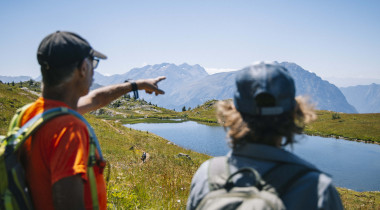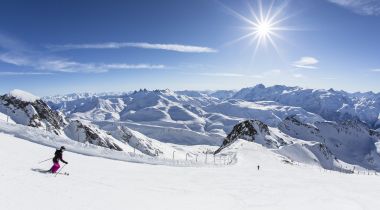23.08
2016
Discovery
If you thought the mountains were cold, unpredictable and rainy in summer, you wouldn’t be wrong! But you can also enjoy glorious weather throughout your stay and it can reach very high temperatures, as Serge Taboulot, Grenoble meteorological centre manager, explains.
The French are obsessed with weather forecasts, especially when it comes to holidays! Never before has our choice of tourist destination been more affected by the forecast. We are increasingly dependent on the weather, and because of that, the mountains have to combat the many preconceptions held about their climate in summer. Here are some of the most common assumptions: cool and even cold temperatures, abundant rain, risk of snow, more storms than anywhere else...
These observations aren’t wrong, but they need to be put into context. “The climate in the mountains is different from other climates because of the vertical dimension”, meteorologist Serge Taboulet tells us. “Slopes and their individual orientation to the sun have a strong influence on the mountain climate.” The risk of unstable events, such as showers or storms, is therefore higher in comparison to lowlands or the coast. “The mountains are the epitome of the micro-climate”, concludes the Grenoble meteorologist.
So, is it cold in the mountains in summer?
It all depends on which direction the mountainside is facing (‘ubac’ north-facing or ‘adret’ south-facing) and the soil condition! In other words, the climate rule that temperatures drop by around 2° with every 300 metres you gain in altitude is not strictly true here.
"Imagine a south-facing mountainside at an altitude of 1,500 metres and a north-facing mountainside at an altitude of 1,000 metres. The first one will have much nicer weather, even though it’s 500 metres higher.” In the same way, the temperature will be much higher in an Alpine pasture than under forest cover, even if the forest is situated lower down. 2,500 metres up, on a south-facing mountainside sheltered from the sun’s rays, temperatures can easily rise over 25°C. Similarly, the temperature difference between day and night is higher in the mountains than on the plains because the air there is drier.
How about ice and snow in summer?
"It isn’t unusual to see an early morning frost in July and August, even at low altitudes. But it disappears when the sun starts shining”. Snow at that time of year is to be expected, but only in the high-mountains! “From 2,000/2,500 metres, you’ll often see snowflakes making an appearance. At high altitude in the Mont Blanc massif, it snows even more often in summer than in winter because it’s less cold.” But it’s unusual to find holiday resorts over 2,200 metres up!
Would you say there are more storms in the mountains than elsewhere?
Yes, definitely, because the mountain relief acts as a barrier for warm air masses. “France averages twenty days of storms per year. In the mountains, it’s 40 days”. But luckily, storms are only temporary events. When the cool air arrives, they disappear and the good weather returns!
Can you feel the effects of global warming in summer?
Mountainous regions are the most affected by global warming in France. Over the course of a century, the temperature at 1,500 metres has risen by around 1.5°C, compared to 1°C elsewhere in the country. Right now, the current climate at 1,350 metres is the same as it used to be at 1,000 metres in the 1960s. That means it’s now warmer in the mountains than it was 50 years ago. Scientists are even talking about a related phenomenon bringing the North-Alpine climate closer to that of the Mediterranean. However, unlike the valleys or the coast, there’s no risk of a heatwave in the mountains thanks to the flow of cold air keeping temperatures down. That’s another recommendation for attracting visitors to the mountains in summer!©Actumontagne






